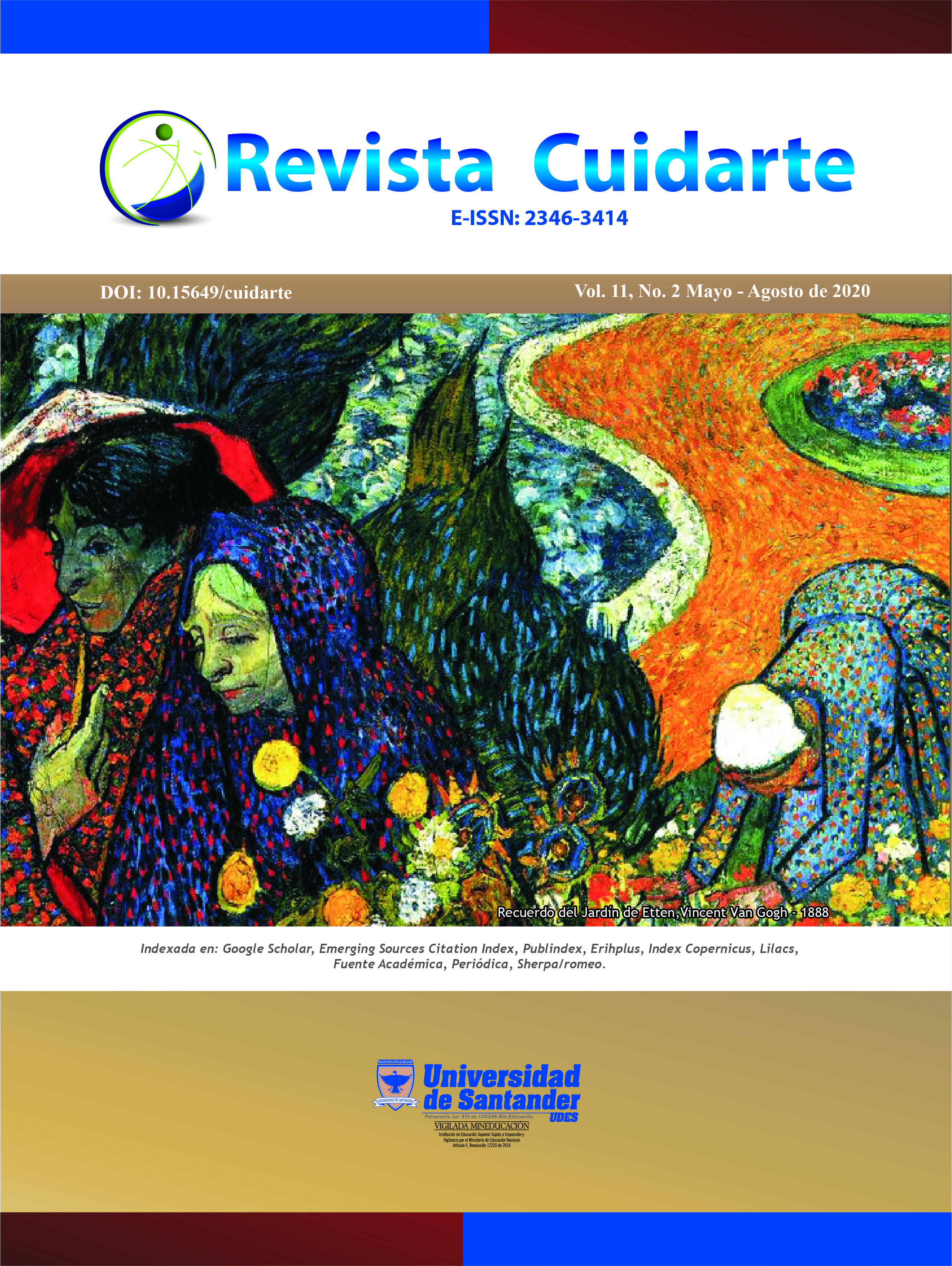COVID-19: What we’ve learned so far
DOI:
https://doi.org/10.15649/cuidarte.1225Palabras clave:
Epidemiology, CoronavirusResumen
Coronavirus disease 2019 (COVID-19) has dominated almost every aspect of human life on planet Earth since it was first discovered in Wuhan, Hubei province, China, in December 20191. A quick google search of the expression COVID-19 reveals more than 3.22 billion results.
In order to understand the importance of this type of virus, we need to carry out two extremely important epidemiological issues: the basic reproduction number (Ro) and the effective infection number (R). Ro is used to measure the transmission potential of a virus. This number is an average of how many people to whom an infected patient is able to transmit the pathogen, assuming that people close to the patient are not immune to it. Now let's understand R. A population will rarely be completely susceptible to infection in the real world. Some contacts will be immune due to a previous infection that conferred immunity or as a result of previous immunization, due to the action of vaccines. Therefore, not all contacts will be infected and the average number of secondary cases per infectious case will be less than Ro. In this calculation, we take into account susceptible and non-susceptible people. With this information presented, we can conclude that if the value of R is >1, the number of cases will increase, starting an epidemic. For a virus to stop spreading, R must be <1. To estimate R, we multiply the value of Ro by the susceptible fraction of a population2.
How to cite this article: Williams G, Cañon-Montañez W. COVID-19: What we’ve learned so far. Revista Cuidarte. 2020; 11(2): e1225. http://dx.doi.org/10.15649/cuidarte.1225
Referencias
Fauci AS, Lane HC, Redfield RR. Covid-19 - Navigating the Uncharted. N Engl J Med. 2020;382(13):1268-9. https://doi.org/10.1056/nejme2002387
Zhang S, Diao MY, Yu W, Pei L, Lin Z, Chen D. Estimation of the reproductive number of novel coronavirus (COVID-19) and the probable outbreak size on the Diamond Princess cruise ship: A data-driven analysis. Int J Infect Dis. 2020; 93:201-4. https://doi.org/10.1016/j.ijid.2020.02.033
Onder G, Rezza G, Brusaferro S. Case-Fatality Rate and Characteristics of Patients Dying in Relation to COVID-19 in Italy. JAMA. 2020. https://doi.org/10.1001/jama.2020.4683
WHO. WHO announces COVID-19 outbreak a pandemic. 12 March 2020. Available in: http://www.euro.who.int/en/health-topics/health-emergencies/coronavirus-covid-19/news/news/2020/3/who-announces-covid-19-outbreak-a-pandemic
Cyranoski D. What China’s coronavirus response can teach the rest of the world. Nature. 2020; 579(7800):479-80 (2020). https://doi.org/10.1038/d41586-020-00741-x
Prime Minister of Australia. Update on coronavirus measures. Media statement. 21 April 2020. Available in: https://www.pm.gov.au/media/update-coronavirus-measures-210420
Wade A. Covid 19 coronavirus: Lockdown to lift - Jacinda Ardern says New Zealand to move to level 3 from 11.59pm next Monday. New Zealand Herald. 20 April 2020. Available in:
https://www.nzherald.co.nz/nz/news/article.cfm?c_id=1&objectid=12326157
Mitchell G. ‘Not enough’ intensive care nurses for coronavirus outbreak. Nursing Times. 12 March 2020. Available in: https://www.nursingtimes.net/news/hospital/not-enough-intensive-care-nurses-for-coronavirus-outbreak-12-03-2020/
Sandoiu A. Allocating ventilators during COVID-19: What is 'fair'? Medical News Today. 8 April 2020. Available in: https://www.medicalnewstoday.com/articles/allocating-ventilators-during-covid-19-what-is-fair#The-ventilator-shortage-crisis
WHO. Rational use of personal protective equipment for corona virus disease (COVID-19). Interim guidance: 19 March 2020. Available in: https://apps.who.int/iris/bitstream/handle/10665/331498/WHO-2019-nCoV-IPCPPE_use-2020.2-eng.pdf
Williams G, Cañon-Montañez W. International leadership in nursing. Rev Cuid. 2013; 4(1): 433-6. http://dx.doi.org/10.15649/cuidarte.v4i1.1
Radbruch L, Knaul FM, de Lima L, de Joncheere C, Bhadelia A. The key role of palliative care in response to the COVID-19 tsunami of suffering. Lancet. 2020. https://doi.org/10.1016/S0140-6736(20)30964-8
WHO. Coronavirus disease (COVID-2019) situation reports. 23 April 2020. Available in: https://www.who.int/emergencies/diseases/novel-coronavirus-2019/situation-reports
Schwab K, Vanham G. What We Must Do to Prevent a Global COVID-19 Depression. TIME. 9 April 2020. Available in: https://time.com/5817922/science-collaboration-global-covid-depression/
Publicado
Cómo citar
Número
Sección
Altmetrics
Descargas
Licencia
Journal Cuidarte, scientific publication of open access, is licensed under a Creative Commons Attribution (CC BY-NC), which permits use, distribution and reproduction in any medium, provided the original work is properly cited and is not used for commercial purposes.
Any other form of use such as reproduction, transformation, public communication or distribution, for profit, requires the prior authorization of the University of Santander UDES.
The names and e-mail addresses entered in the Journal Cuidarte will be used exclusively for the purposes stated by this magazine and will not be available for any other purpose or other person.
The articles published in the Journal Cuidarte represent the criteria of their authors and do not necessarily constitute the official opinion of the University of Santander UDES.








